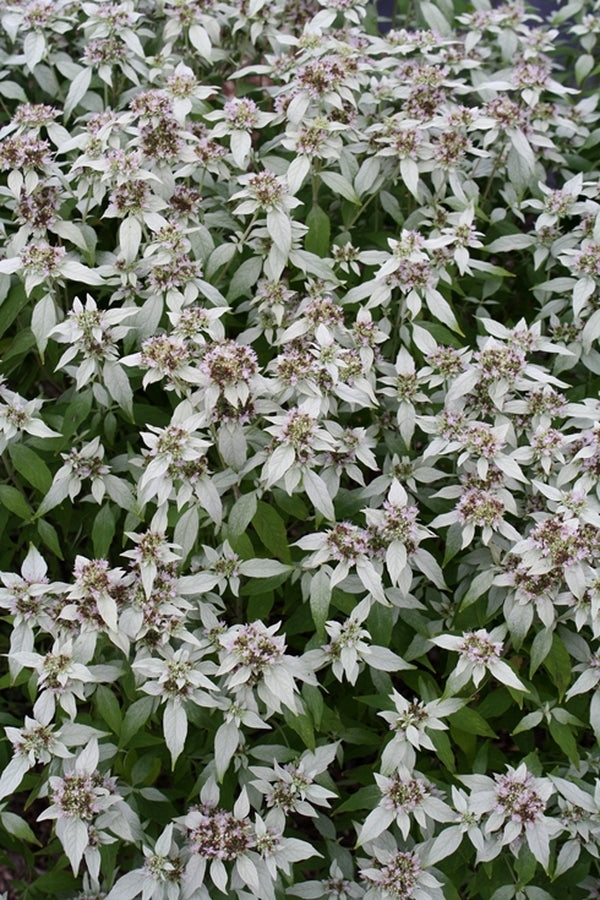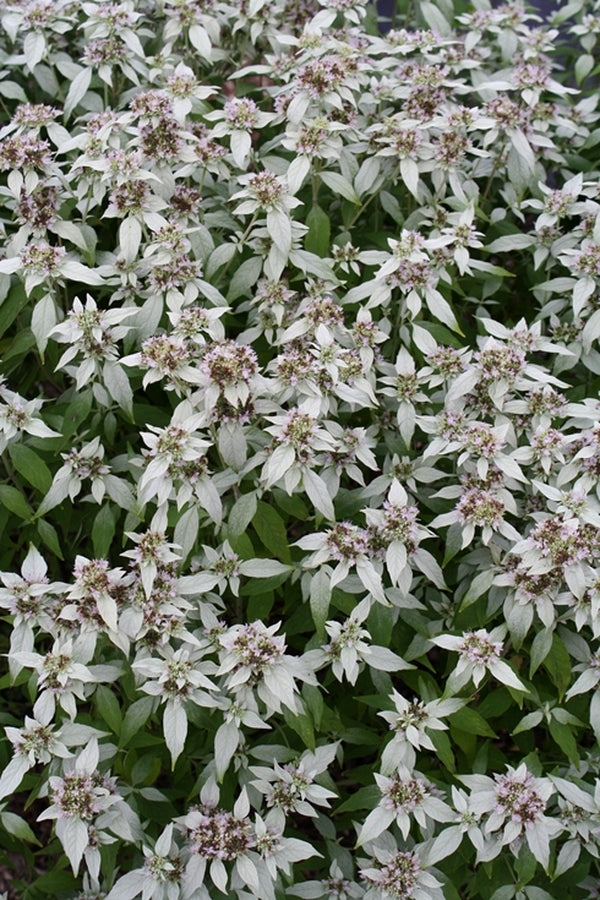Pycnanthemum incanum 'Stowe Away'
Stowe Away Mountain Mint
This plant is not currently for sale. This is an archive page preserved for informational use.
Shop Available PycnanthemumItem #: 9678
Zones: 5a to 8b, at least
Dormancy: Winter
Height: 36" tall
Origin: United States
Pot Size: 3.5" pot (24 fl. oz/0.7 L)
In 2004, I was visiting Douglas Ruhren, former curator of the Daniel Stowe Botanic Garden in NC, when I noticed the Pycnanthemum incanum he planted was clumping instead of running all over the place like my previous experience with this species. I was subsequently able to acquire seed and finally, in 2012, we selected the most compact, clump-forming clone, naming it Pycnanthemum 'Stowe Away'. For us, this charming mountain mint has much finer foliage than is typical with Pycnanthemum incanum and after 6 years, it has produced a 3' tall x 3' wide patch, topped in late June with silvery terminal foliage highlighted by small light lavender flowers and a ton of really cool insects.
Maintenance:
Cut last year's stems to the ground before new growth starts in spring, or whenever they get shabby or you tire of their presence. Generally the seed heads remain attractive all winter. This is all it requires in the way of maintenance.
Of the 20 species of Pycnanthemum, some are clump forming, others are spreading. The clump forming species are suitable even to a small sunny garden. The spreading Mountain Mints are perhaps better suited to larger gardens where larger masses of ground covering plants are desired.
Growing Conditions:
Sun to part sun is best both for flowering and the pollinators which flock to the flowers. Average soil conditions are preferred.
Garden Value:
The Mountain Mints are superb supporters of a wide range of pollinating insects, especially so for many species are in bloom for several months. Beyond the importance of supporting pollinators there is the shear joy and entertainment of watching a wide range of insects working these flowers; a veritable Serengeti Plains in a few square feet of ones garden. They are attractive in bloom as well as in their winter forms and are usually avoided by deer and rabbits.
Natural Impact:
Include in any sunny garden where one hopes to support pollinating insects.

-
Other Attributes
Genus: Pycnanthemum
Flower Color: White/Cream
Leaf Color: Green
Container Role: Thrillers
Garden Themes: Cottage Garden Plants , Green Roofs , Living Wall , White Garden
Other: Fragrant Foliage Plants , Edimentals , Cut Flower Plants , Deer Resistant Plants , Drought Tolerant Plants , Florida Native Plants , Georgia native plants , Pollinator Plants , Medicinal Plants , North American Native Plants , North Carolina Native Plants , Plant Delights Introductions , Xeriscaping Plants , United States Native Plants


